Abstract
The relationship between the pH of the medium and specific growth rates, in well-buffered media at 38.5 degrees C, was determined for three strains of Butyrivibrio fibrisolvens and for one strain each of Streptococcus bovis, Selenomonas ruminantium subsp. lactilytica. Megasphaera elsdenii, Veillonella alcalescens, and Propionibacterium acnes. The pH optima for growth were between 6.1 and 6.6 for all six species, and the upper pH limits were between 7.3 and 7.8. The lower limit pH values for growth on glucose were 5.4 for B. fibrisolvens, near 5.0 for V. alcalescens, and between 4.4 and 4.8 for the other four species. These values fall within the minimum pH ranges found when these species are grown in poorly buffered medium with nonlimiting glucose concentrations. Acid sensitivity per se could cause the washout of B. fibrisolvens, but not of the other five species, from the rumens of animals on high-starch diets.
Full text
PDF
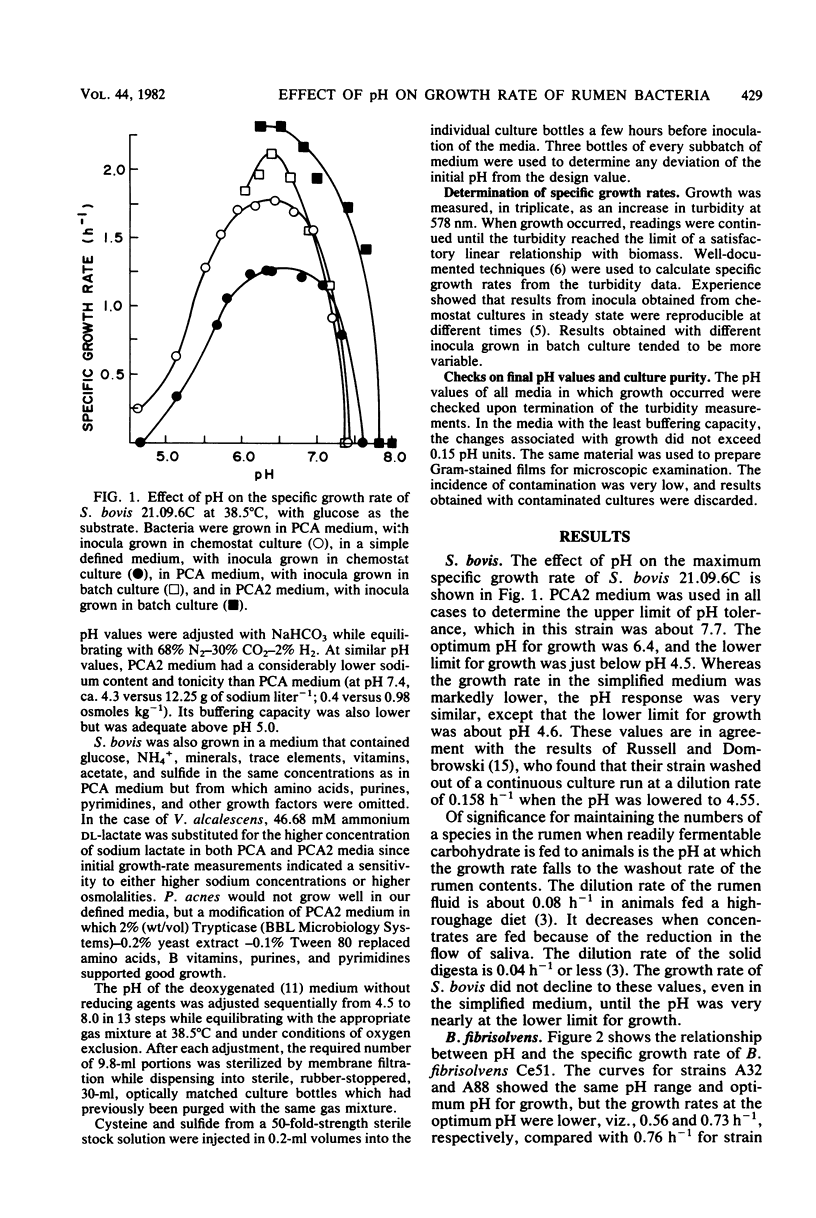
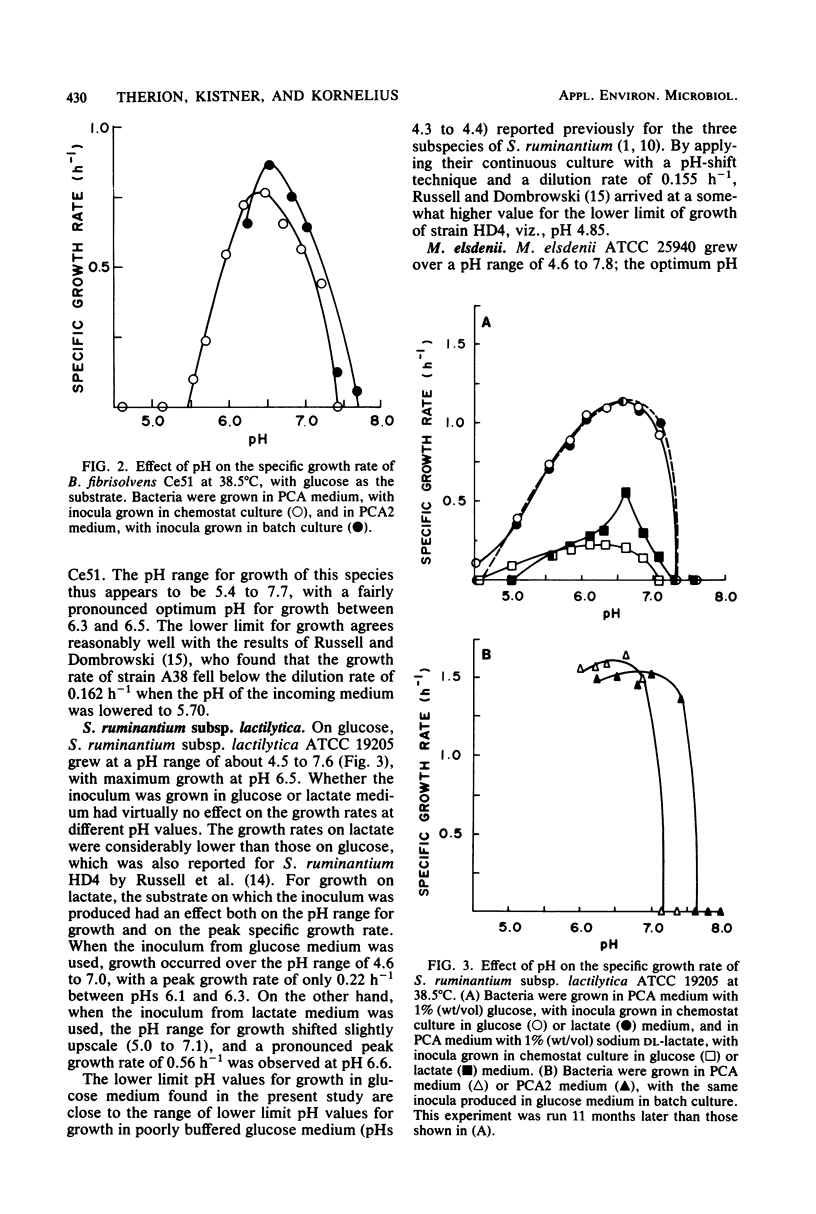
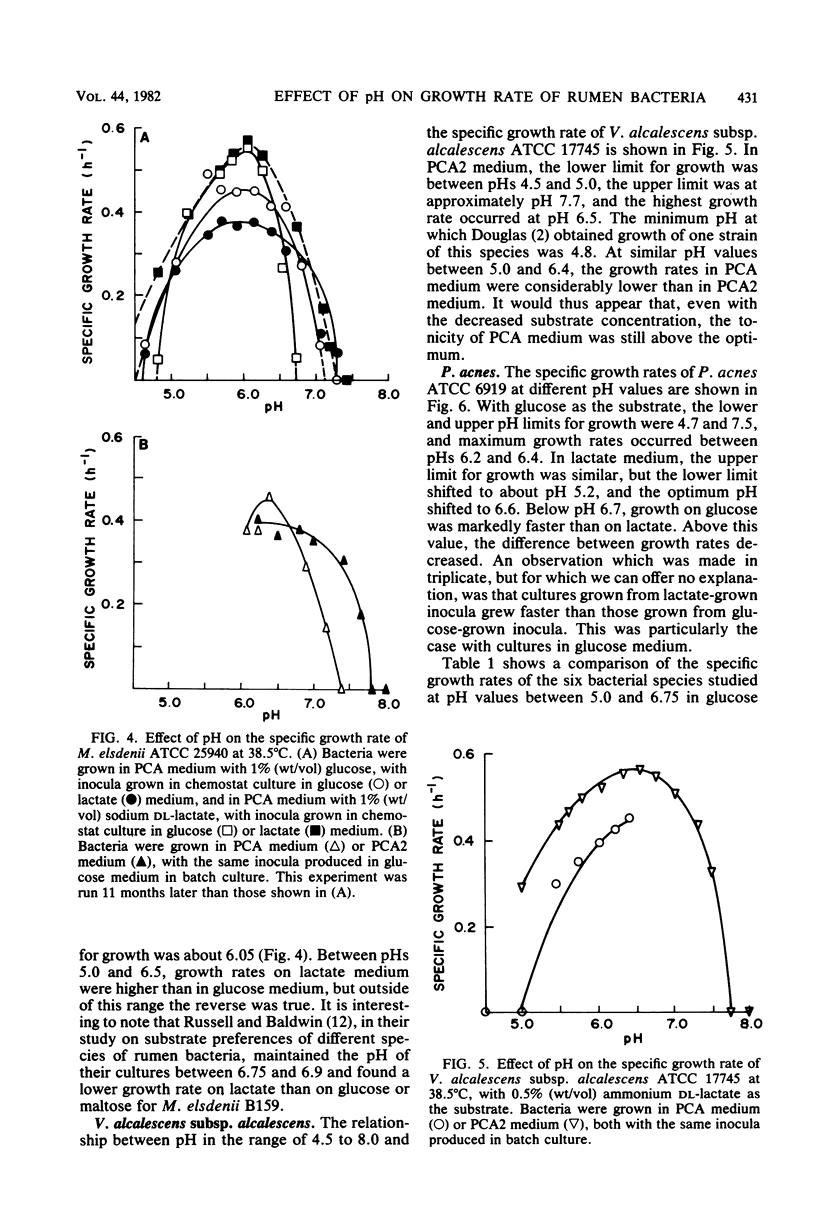
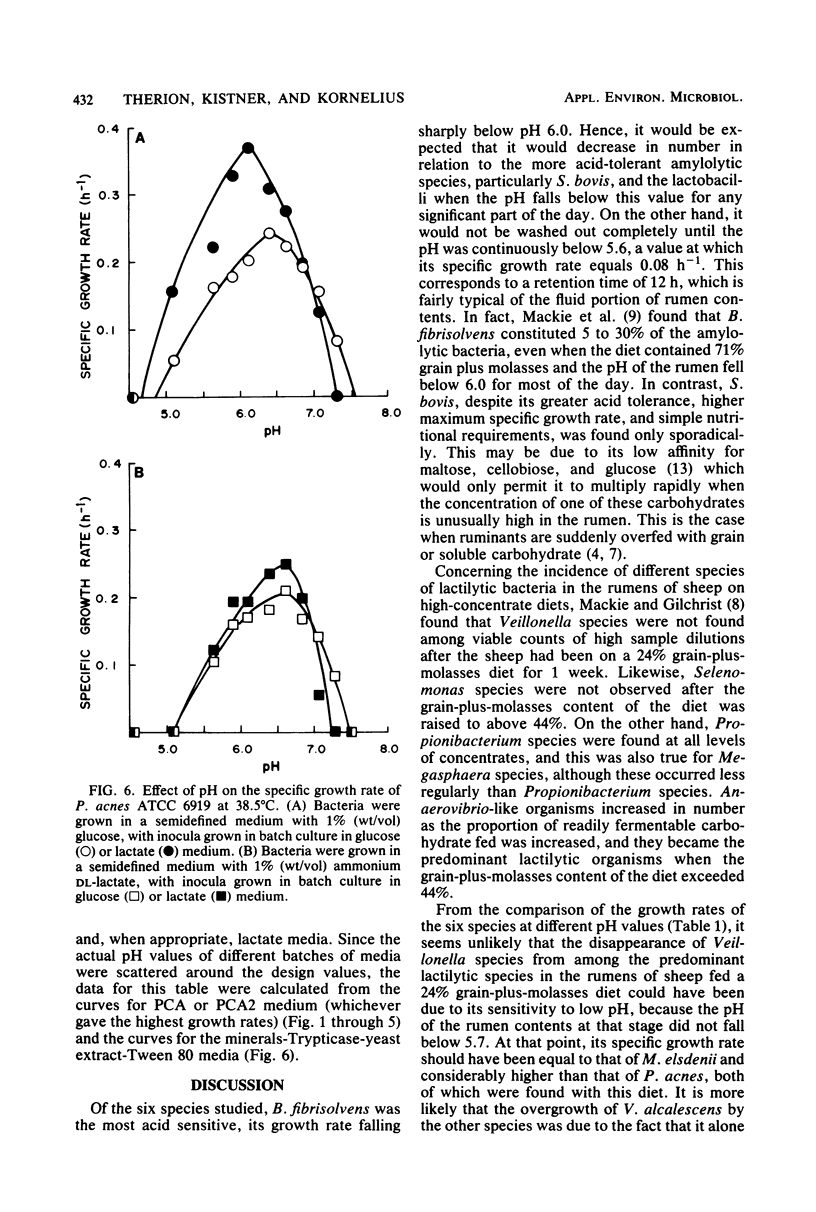
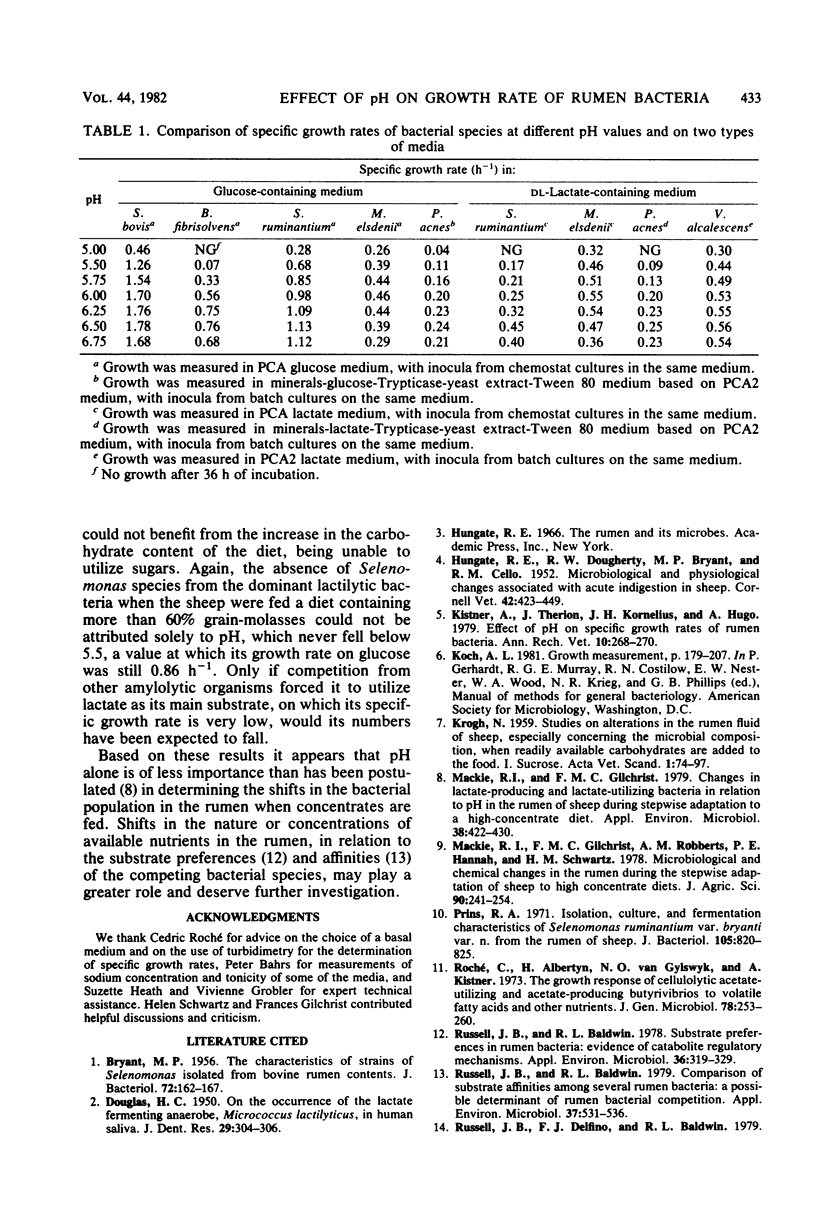
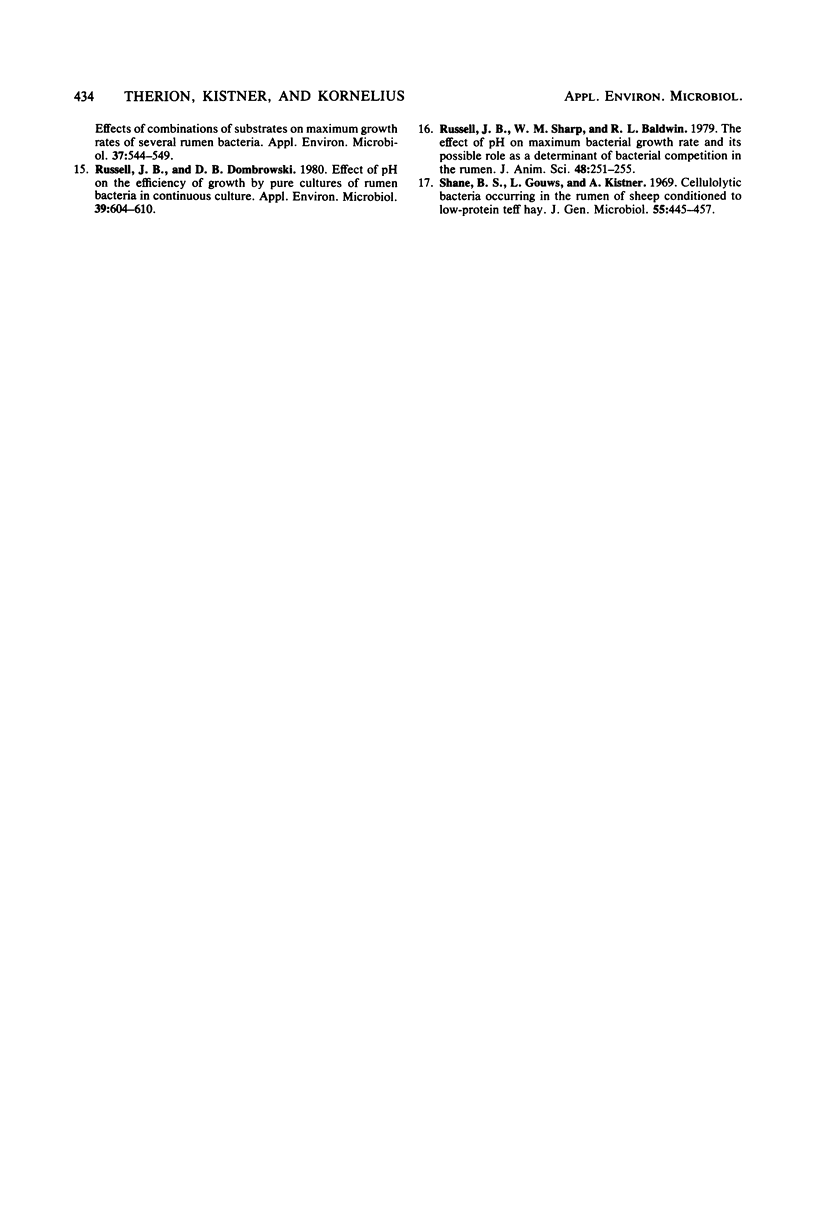
Selected References
These references are in PubMed. This may not be the complete list of references from this article.
- BRYANT M. P. The characteristics of strains of Selenomonas isolated from bovine rumen contents. J Bacteriol. 1956 Aug;72(2):162–167. doi: 10.1128/jb.72.2.162-167.1956. [DOI] [PMC free article] [PubMed] [Google Scholar]
- DOUGLAS H. C. On the occurrence of the lactate fermenting anaerobe, Micrococcus lactilyticus, in human saliva. J Dent Res. 1950 Jun;29(3):304–306. doi: 10.1177/00220345500290030801. [DOI] [PubMed] [Google Scholar]
- HUNGATE R. E., DOUGHERTY R. W., BRYANT M. P., CELLO R. M. Microbiological and physiological changes associated with acute indigestion in sheep. Cornell Vet. 1952 Oct;42(4):423–449. [PubMed] [Google Scholar]
- Kistner A., Therion J., Kornelius J. H., Hugo A. Effect of pH on specific growth rates of rumen bacteria. Ann Rech Vet. 1979;10(2-3):268–270. [PubMed] [Google Scholar]
- Mackie R. I., Gilchrist F. M. Changes in Lactate-Producing and Lactate-Utilizing Bacteria in Relation to pH in the Rumen of Sheep During Stepwise Adaptation to a High-Concentrate Diet. Appl Environ Microbiol. 1979 Sep;38(3):422–430. doi: 10.1128/aem.38.3.422-430.1979. [DOI] [PMC free article] [PubMed] [Google Scholar]
- Prins R. A. Isolation, culture, and fermentation characteristics of Selenomonas ruminantium var. bryantivar. n. from the rumen of sheep. J Bacteriol. 1971 Mar;105(3):820–825. doi: 10.1128/jb.105.3.820-825.1971. [DOI] [PMC free article] [PubMed] [Google Scholar]
- Roché C., Albertyn H., van Gylswyk N. O., Kistner A. The growth response of cellulolytic acetate-utilizing and acetate-producing butyruvibrios to volatile fatty acids and other nutrients. J Gen Microbiol. 1973 Oct;78(2):253–260. doi: 10.1099/00221287-78-2-253. [DOI] [PubMed] [Google Scholar]
- Russell J. B., Baldwin R. L. Comparison of substrate affinities among several rumen bacteria: a possible determinant of rumen bacterial competition. Appl Environ Microbiol. 1979 Mar;37(3):531–536. doi: 10.1128/aem.37.3.531-536.1979. [DOI] [PMC free article] [PubMed] [Google Scholar]
- Russell J. B., Baldwin R. L. Substrate preferences in rumen bacteria: evidence of catabolite regulatory mechanisms. Appl Environ Microbiol. 1978 Aug;36(2):319–329. doi: 10.1128/aem.36.2.319-329.1978. [DOI] [PMC free article] [PubMed] [Google Scholar]
- Russell J. B., Dombrowski D. B. Effect of pH on the efficiency of growth by pure cultures of rumen bacteria in continuous culture. Appl Environ Microbiol. 1980 Mar;39(3):604–610. doi: 10.1128/aem.39.3.604-610.1980. [DOI] [PMC free article] [PubMed] [Google Scholar]
- Russell J. B., Sharp W. M., Baldwin R. L. The effect of pH on maximum bacterial growth rate and its possible role as a determinant of bacterial competition in the rumen. J Anim Sci. 1979 Feb;48(2):251–255. doi: 10.2527/jas1979.482251x. [DOI] [PubMed] [Google Scholar]
- Shane B. S., Gouws L., Kistner A. Cellulolytic bacteria occurring in the rumen of sheep conditioned to low-protein teff hay. J Gen Microbiol. 1969 Mar;55(3):445–457. doi: 10.1099/00221287-55-3-445. [DOI] [PubMed] [Google Scholar]


